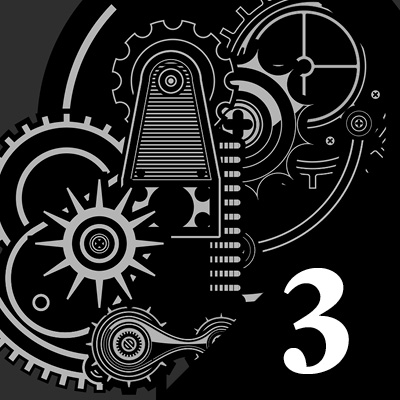Lives of Machines & The Industrial Revolution: 10
A GRANITE BAY DESIGN MICROSITE![]()
 Lives of Machines and
Lives of Machines and
The Industrial Revolution: Part 10
Milestones & Terminology
1870
Invention of vaccines: A chemist named Louis Pasteur believed that germs caused disease. Using this information, he created vaccines that helped prevent many common diseases, which helped people live longer. Today, Pasteur plays the role of national hero in France, and the Pasteur Institutes he founded continue to develop breakthroughs in the prevention and treatment of infectious disease. At the same time Pasteur began his fermentation studies, he adopted a related view on the cause of diseases. He and a minority of other scientists believed that diseases arose from the activities of microorganisms—germ theory. Opponents believed that diseases, particularly major killer diseases, arose in the first instance from a weakness or imbalance in the internal state and quality of the afflicted individual. In an early foray into the causes of particular diseases, in the 1860s, Pasteur was able to determine the cause of the devastating blight that had befallen the silkworms that were the basis for France’s then-important silk industry. Surprisingly, he found that the guilty parties were two microorganisms rather than one. [1]
What Powers Machines?
Human and animal effort were the original power sources for early machines. Waterwheel: Waterwheels appeared around the world around 300 BC to use flowing water to generate rotary motion, which was applied to milling grain, and powering lumber, machining and textile operations. Modern water turbines use water flowing through a dam to drive an electric generator. Windmill: Early windmills captured wind power to generate rotary motion for milling operations. Modern wind turbines also drives a generator. This electricity in turn is used to drive motors forming the actuators of mechanical systems. Engine: The word engine derives from “ingenuity” and originally referred to contrivances that may or may not be physical devices.A steam engine uses heat to boil water contained in a pressure vessel; the expanding steam drives a piston or a turbine. This principle can be seen in the aeolipile of Hero of Alexandria. This is called an external combustion engine. An automobile engine is called an internal combustion engine because it burns fuel (an exothermic chemical reaction) inside a cylinder and uses the expanding gases to drive a piston. A jet engine uses a turbine to compress air which is burned with fuel so that it expands through a nozzle to provide thrust to an aircraft, and so is also an “internal combustion engine. Power plant: The heat from coal and natural gas combustion in a boiler generates steam that drives a steam turbine to rotate an electric generator. A nuclear power plant uses heat from a nuclear reactor to generate steam and electric power. This power is distributed through a network of transmission lines for industrial and individual use. Motors: Electric motors use either AC or DC electric current to generate rotational movement. Electric servomotors are the actuators for mechanical systems ranging from robotic systems to modern aircraft. Fluid Power: Hydraulic and pneumatic systems use electrically driven pumps to drive water or air respectively into cylinders to power linear movement.
Electrochemical: Chemicals and materials can also be sources of power. They may chemically deplete or need re-charging, as is the case with batteries, or they may produce power without changing their state, which is the case for solar cells and thermoelectric generators. All of these, however, still require their energy to come from elsewhere. With batteries, it is the already existing chemical potential energy inside. In solar cells and thermoelectrics, the energy source is light and heat respectively. [2]
“If you define the problem correctly, you almost have the solution.”
Steve Jobs
The Industrial Revolution



Why Are Entrepreneurs Important? Entrepreneurship is one of the resources economists categorize as integral to production, the other three being land/natural resources, labor, and capital. An entrepreneur combines the first three of these to manufacture goods or provide services. They typically create a business plan, hire labor, acquire resources and financing, and provide leadership and management for the business. Economists have never had a consistent definition of “entrepreneur” or “entrepreneurship” (the word “entrepreneur” comes from the French verb entreprendre, meaning “to undertake”). Though the concept of an entrepreneur existed and was known for centuries, the classical and neoclassical economists left entrepreneurs out of their formal models. They assumed that perfect information would be known to fully rational actors, leaving no room for risk-taking or discovery. It wasn’t until the middle of the 20th century that economists seriously attempted to incorporate entrepreneurship into their models. Three thinkers were central to the inclusion of entrepreneurs: Joseph Schumpeter, Frank Knight, and Israel Kirzner. 1 Schumpeter suggested that entrepreneurs—not just companies—were responsible for the creation of new things in the search for profit. Knight focused on entrepreneurs as the bearers of uncertainty and believed they were responsible for risk premiums in financial markets. Kirzner thought of entrepreneurship as a process that led to the discovery of opportunities. [3]
[1] is from one of two sources, either Riyasamdani or Historic UK. [2] is from Wikipedia and [3] is from The Gutenberg Project section on The Industrial Revolution. The period photographs are from a variety of public domain sources. You can use the thumbnail gallery below to navigate through the site.











